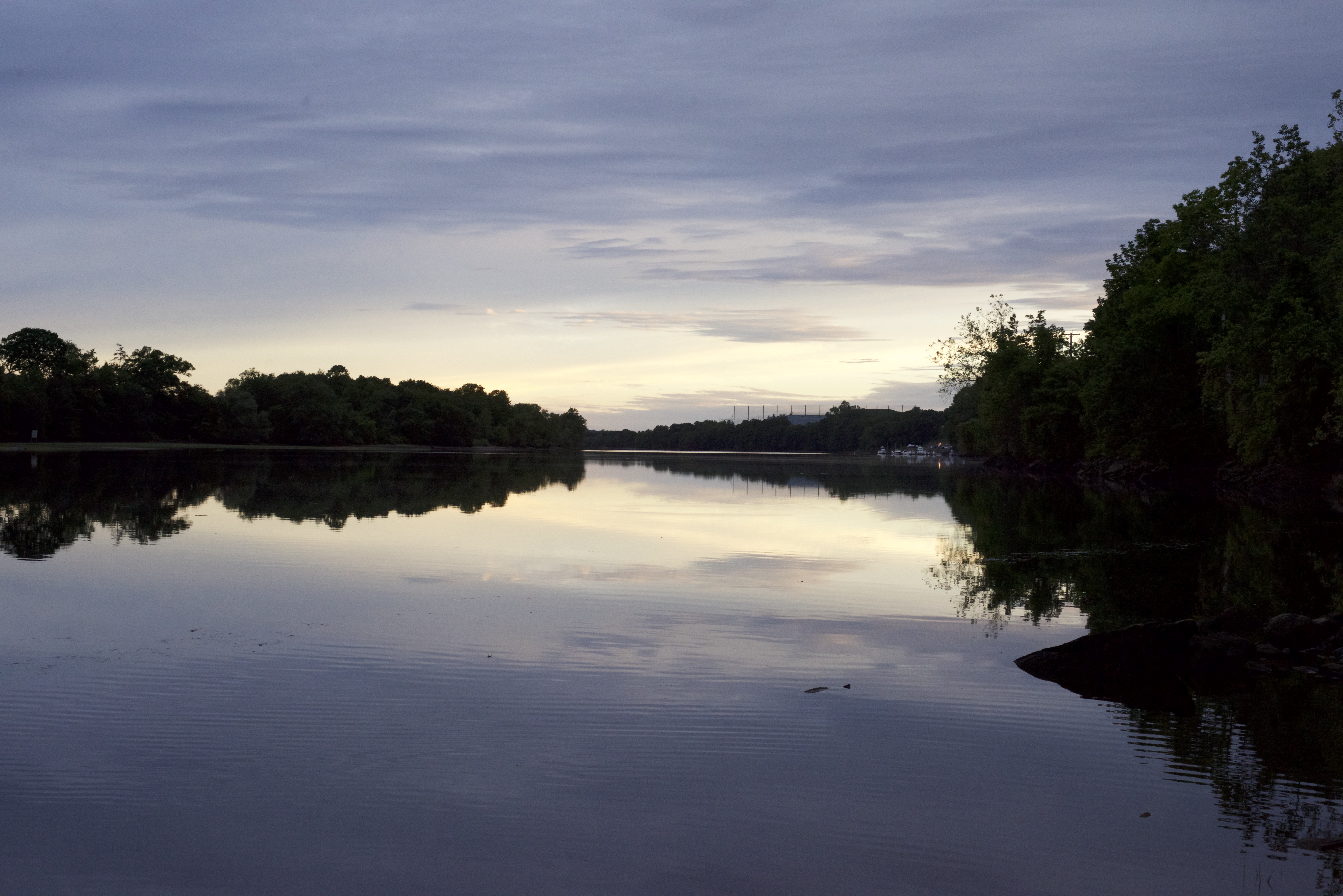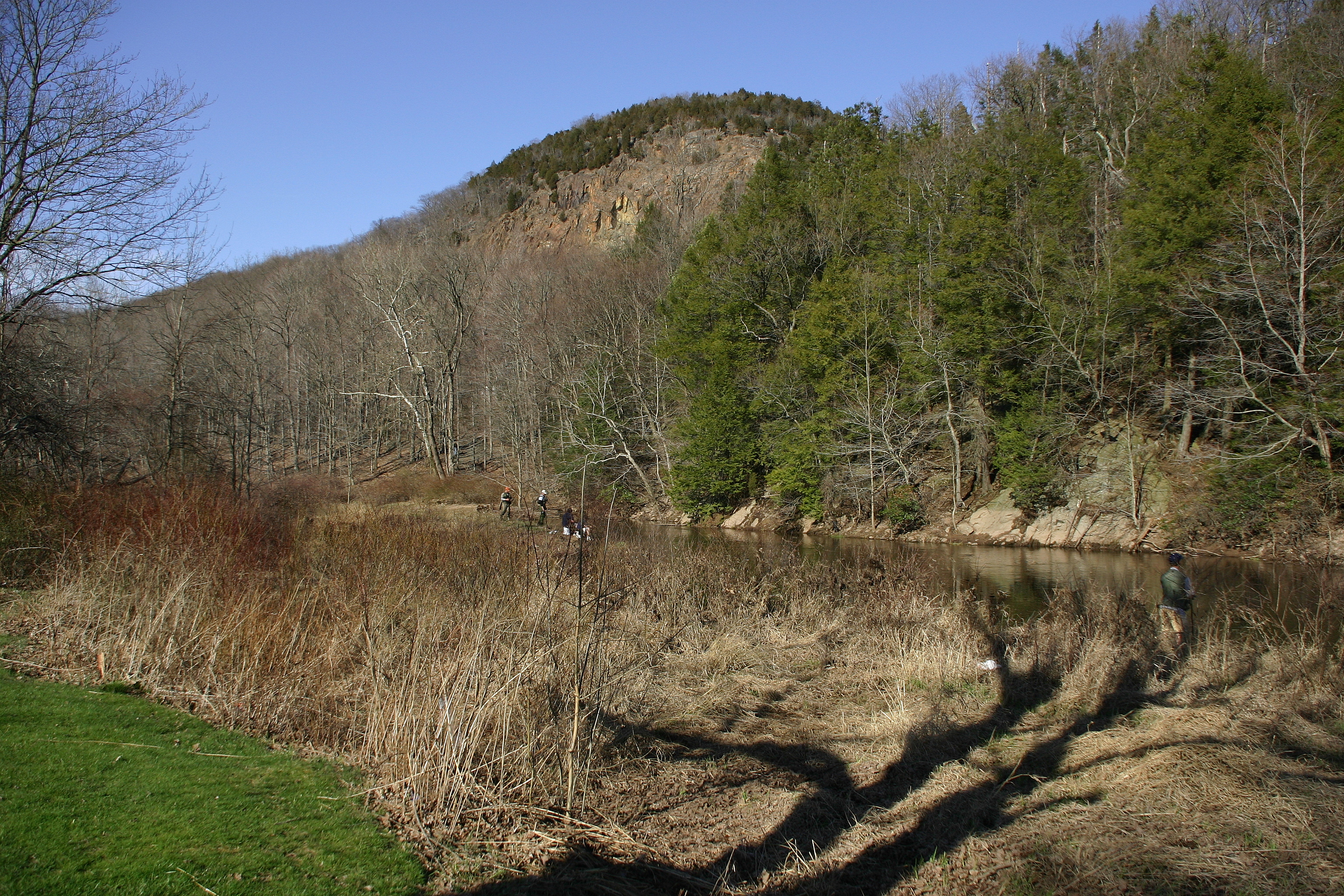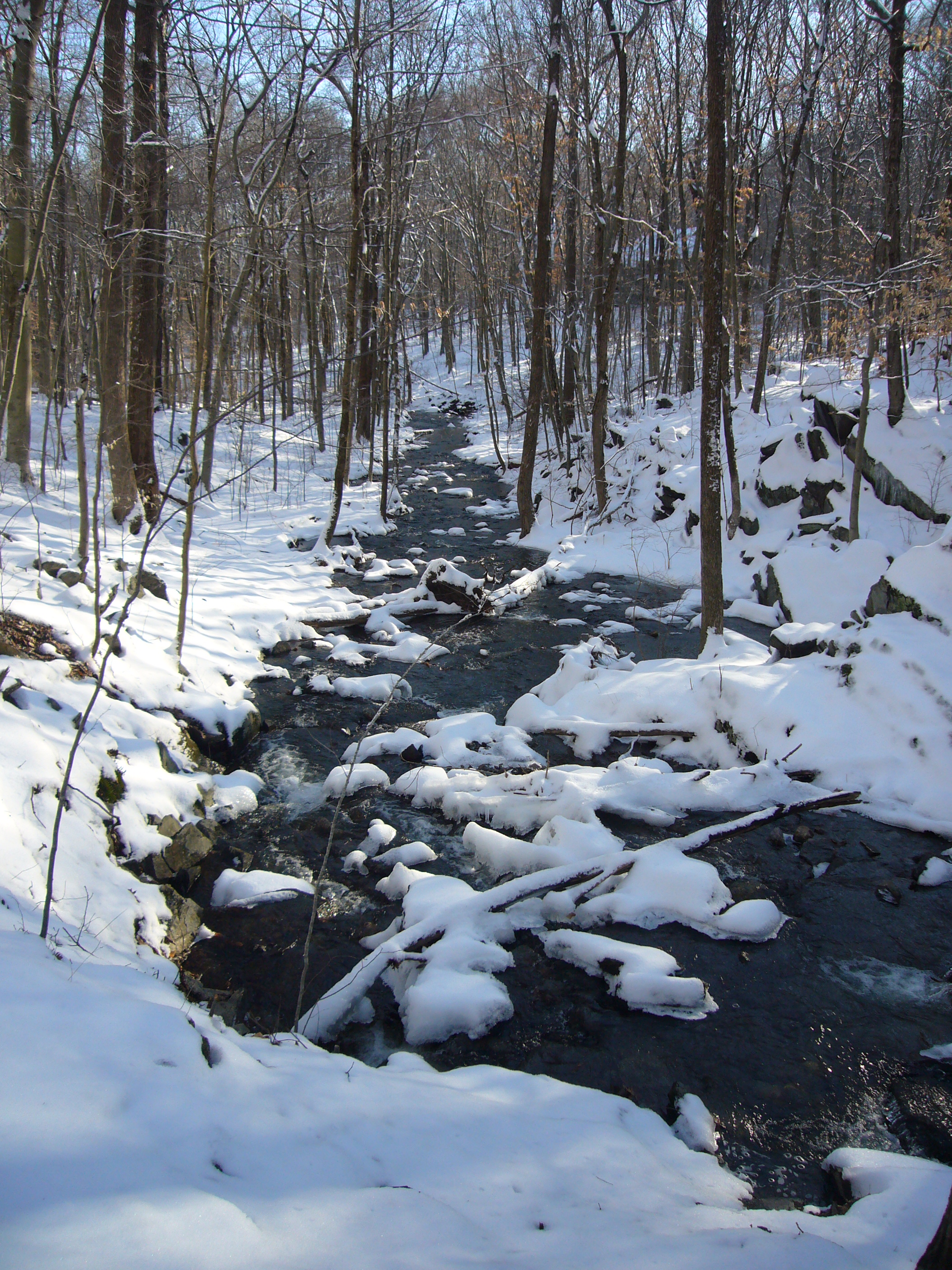|
South Central Connecticut Regional Water Authority
The South Central Connecticut Regional Water Authority (SCCRWA or RWA) is a public water supply utility in Connecticut, United States. The RWA supplies water in a 15-town region with a population of about 430,000. The RWA acts as a steward of the environment in the local region by protecting more than 26,000 acres of watershed lands, and promoting sustainability. The South Central Connecticut Regional Water Authority is a non-profit public corporation and political subdivision of the State of Connecticut, but its core business was originally established and operated as the New Haven Water Company, a private business. The RWA produces on average 55 million gallons of water daily. One of its conduits is the Genesee Tunnel. History The South Central Connecticut Regional Water Authority was originally established in 1849 as the New Haven Water Company. One of the company's founders was Eli Whitney II. In 1849, Whitney began construction of a dam that impounded the Mill River to f ... [...More Info...] [...Related Items...] OR: [Wikipedia] [Google] [Baidu] |
Public Water Supply
In public relations and communication science, publics are groups of individual people, and the public (a.k.a. the general public) is the totality of such groupings. This is a different concept to the sociological concept of the ''Öffentlichkeit'' or public sphere. The concept of a public has also been defined in political science, psychology, marketing, and advertising. In public relations and communication science, it is one of the more ambiguous concepts in the field. Although it has definitions in the theory of the field that have been formulated from the early 20th century onwards, and suffered more recent years from being blurred, as a result of conflation of the idea of a public with the notions of audience, market segment, community, constituency, and stakeholder. Etymology and definitions The name "public" originates with the Latin '' publicus'' (also '' poplicus''), from ''populus'', to the English word 'populace', and in general denotes some mass population ("the p ... [...More Info...] [...Related Items...] OR: [Wikipedia] [Google] [Baidu] |
East Haven, Connecticut
East Haven is a town in New Haven County, Connecticut, in the United States. As of the 2020 census, the town population was 27,923. Located east of New Haven, it is part of the Greater New Haven area. East Haven is from Hartford, from New York City, from Providence, Rhode Island, and from Boston. History The Connecticut Colony granted the town petition for Township in May 1707 and colonists changed the name from Iron Works Village to East Haven. Some outstanding land issues with New Haven and a minor feud with Governor Gurdon Saltonstall resulted in the rescinding of the township status; the area was made a parish of New Haven. New Haven and neighboring towns such as East Haven have been destinations for a new wave of immigrants since the late 20th century, the majority of whom in East Haven are Latinos from Ecuador. In the 2010 census, Hispanics and Latinos made up more than 10% of the town's population. On August 9, 2013, a Rockwell International Turbo Commander 690 ... [...More Info...] [...Related Items...] OR: [Wikipedia] [Google] [Baidu] |
Housatonic River
The Housatonic River ( ) is a river, approximately long,U.S. Geological Survey. National Hydrography Dataset high-resolution flowline dataThe National Map , accessed April 1, 2011 in western Massachusetts and western Connecticut in the United States. It flows south to southeast, and drains about of southwestern Connecticut into Long Island Sound. Its Drainage basin, watershed is just to the west of the watershed of the lower Connecticut River. History Indigenous history Indigenous people began using the river area for fishing and hunting at least 6,000 years ago. By 1600, the inhabitants were mostly Mohicans and may have numbered 30,000. The river's name is derived from the Mohican phrase ''"usi-a-di-en-uk"'', translated as "beyond the mountain place" or "river of the mountain place".Housatonic Valley Association. Cornwall Bridge, CT"History of the Housatonic Valley." Accessed 2015-10-1. It is referred to in the deed by which a group of twelve colonists called "The Proprietor ... [...More Info...] [...Related Items...] OR: [Wikipedia] [Google] [Baidu] |
Mill River (Connecticut)
The Mill River is a river in New Haven County, Connecticut. History A mill for grinding corn was built on a Quinnipiack ford near East Rock in 1642. By 1780 there were eight mills. In time the river provided power for Eli Whitney's gun factory, now the Eli Whitney Museum. It joins the Quinnipiac River at the mouth of New Haven Harbor which opens out into Long Island Sound. Watershed and course The river starts in the town of Cheshire, flows through Hamden and New Haven, and discharges into New Haven Harbor on Long Island Sound. The river's length is .U.S. Geological Survey. National Hydrography Dataset high-resolution flowline dataThe National Map, accessed April 1, 2011 The river is dammed in southern Hamden to form Lake Whitney (Connecticut), Lake Whitney, which is operated as a reservoir by the South Central Connecticut Regional Water Authority. Mill River passes through Sleeping Giant State Park in northern Hamden and East Rock Park below Lake Whitney in Ha ... [...More Info...] [...Related Items...] OR: [Wikipedia] [Google] [Baidu] |
Quinnipiac River
The Quinnipiac River is a U.S. Geological Survey. National Hydrography Dataset high-resolution flowline dataThe National Map, accessed April 1, 2011 long river in the New England region of the United States, located entirely in the state of Connecticut. The river rises in West Central Connecticut from Dead Wood Swamp near the city of New Britain. It flows roughly southward to Plainville, Southington, and Cheshire, west of the city of Meriden, through Wallingford and Yalesville, North Haven, and flows into New Haven Harbor, an inlet of Long Island Sound, east of downtown New Haven. History The name "Quinnipiac" comes from an Algonquian phrase meaning "long water land", and historically referred both to the river and the area around its mouth at Long Island Sound. Europeans found the river in 1614. By the early 18th century, early settlers called the Quinnipiac River the Dragon River after the seals, then referred to as “sea dragons,” that were once abundant there. Alt ... [...More Info...] [...Related Items...] OR: [Wikipedia] [Google] [Baidu] |
West River (Connecticut)
The West River is a U.S. Geological Survey. National Hydrography Dataset high-resolution flowline dataThe National Map accessed April 1, 2011 freshwater stream in southern Connecticut. It flows through the towns of Bethany, Woodbridge, New Haven, and West Haven before discharging into New Haven Harbor. Within the city of New Haven, the river is surrounded by Edgewood Park and the West River Memorial Park along much of its length. While the river's natural channel winds along the western edge of the West River Memorial Park, a very straight channel (a former rowing course) cuts through its middle and terminates at the park's northern edge (Derby Avenue). There is a public canoe launch, maintained by the City of New Haven Department of Parks, Recreation, and Trees, in the constructed channel at Derby Avenue. Dams The river is dammed in several places and some of the reservoirs are used by the South Central Connecticut Regional Water Authority to provide a percentage of the publ ... [...More Info...] [...Related Items...] OR: [Wikipedia] [Google] [Baidu] |
Lake Saltonstall (Connecticut)
Lake Saltonstall (''Lonotonoquet'' in Quinnipiac), is a long narrow lake located in south-central Connecticut. It covers an area of approximately and is nestled in the center of the trap rock Saltonstall Mountain. The lake is surrounded by forest and serves as part of the local water supply for surrounding towns. The lake and the area around it is owned by the South Central Connecticut Regional Water Authority, a company which also regulates fishing and rents boats. Private boats are not allowed. Regional Water Authority (RWA) recreation permitmay be purchased, which provides access to hiking trails, fishing and boat rentals at Lake Saltonstall and other properties owned and maintained by the RWA. There are a variety of fish native to Lake Saltonstall in addition to those that are stocked by the RWA. Fish in Lake Saltonstall include largemouth bass, smallmouth bass, black crappie, walleye, trout, yellow perch and carp. Interstate 95 runs across the southern edge of the lake, ... [...More Info...] [...Related Items...] OR: [Wikipedia] [Google] [Baidu] |
Woodbridge, Connecticut
Woodbridge is a New England town, town in New Haven County, Connecticut, New Haven County, Connecticut, United States. The population was 9,087 at the 2020 United States Census, 2020 census. The town center is listed on the National Register of Historic Places as Woodbridge Green Historic District. Woodbridge is part of the Amity Regional School District #5, rated the #1 school district in New Haven County and the 10th best school district in CT by Niche in 2021. As of 2019 Woodbridge has the 7th highest median household income in CT. History Woodbridge was originally called "Amity", having been carved out of land originally belonging to New Haven, Connecticut, New Haven and Milford, Connecticut, Milford as an independent parish in 1739. In 1742, the Rev. Benjamin Woodbridge was ordained in Amity, and it is after him that the modern town was named. Woodbridge was incorporated in 1784. In 1661, the town was the location of one of the hideouts of the "List of regicides of Charle ... [...More Info...] [...Related Items...] OR: [Wikipedia] [Google] [Baidu] |
West Haven, Connecticut
West Haven is a city in New Haven County, Connecticut, United States. It is located on the coast of Long Island Sound. At the 2020 census, the population of the city was 55,584. History Settled in 1648, West Haven (then known as West Farms) was a part of the original New Haven Colony. In 1719, it became the separate parish of West Haven, but was still officially a part of New Haven until 1822. During the American Revolution, West Haven was the frequent launch and arrival point for raiding parties on both sides of the war. On July 5, 1779, the British invaded New Haven Harbor and came ashore in West Haven and East Haven, Connecticut, East Haven. Thomas Painter, a teenaged militiaman watching for the approaching British ships while standing atop Savin Rock, is depicted on the city seal. The main commercial street, Campbell Avenue, is named for British Adjutant William Campbell, at the time an ensign in the Third Guards, who rescued the Reverend Noah Williston, the local Congre ... [...More Info...] [...Related Items...] OR: [Wikipedia] [Google] [Baidu] |
Orange, Connecticut
Orange is a town in New Haven County, Connecticut, United States. The population was 14,280 at the 2020 census. The town is governed by a Board of Selectmen. History The Paugusset, an Algonquian people, once lived in the area that is now Orange. In 1639, the Rev. Peter Prudden purchased the land from the Native Americans for six coats, ten blankets, one kettle, twelve hatchets, twelve hoes, two dozen knives and a dozen small mirrors. When originally settled by English colonists, Orange was the northern and eastern district of the now neighboring city of Milford; however, by 1822, the population of the area had grown to the point where residents desired to form their own separate community, thus forming the town of Orange. The town is named after William III of England, who was Prince of Orange from birth. William is remembered for succeeding James II, deposed in the Glorious Revolution of 1688. James II had been considered a despot in Connecticut; he had famously and unsucc ... [...More Info...] [...Related Items...] OR: [Wikipedia] [Google] [Baidu] |
North Haven, Connecticut
North Haven is a New England town, town in New Haven County, Connecticut, New Haven County, Connecticut on the outskirts of New Haven, Connecticut, New Haven, Connecticut. As of the 2020 United States Census, 2020 census, it had a population of 24,253. North Haven is home of the Quinnipiac University School of Health Sciences, the School of Nursing, School of Law, School of Education, and School of Medicine on Bassett Road. North Haven has easy access to Interstate 91 and the Wilbur Cross Parkway (Connecticut Route 15, Route 15). It is near Sleeping Giant State Park and less than from downtown New Haven, Connecticut, New Haven and Yale University. In July 2007, Money (magazine), ''Money'' magazine ranked North Haven as the eighty-sixth "best place to live" in the United States. History In his will of 1714, the Reverend James Pierpont (1659–1714) of New Haven gave to his neighbors in the Northeast Parish, as North Haven was called, "provided those neighbors will set their me ... [...More Info...] [...Related Items...] OR: [Wikipedia] [Google] [Baidu] |
North Branford, Connecticut
North Branford is a New England town, town in New Haven County, Connecticut, New Haven County, Connecticut, United States. The population was 13,544 at the 2020 United States Census, 2020 census. The town is primarily known for agriculture and for other points of interest including Lake Gaillard and Northford Ice Pavilion. Wallingford, Durham, and North Haven border it to the north- East Haven to the west, Guilford to the east, and Branford to the south. The town has the neighborhoods of Totoket, Wood Chase, Sea Hill, Twin Lakes (North Branford, Connecticut), Twin Lakes, Ashley Park, and Doral Farms. North Branford also includes the village of Northford, Connecticut, Northford. History This early mill and farming community incorporated from Branford, Connecticut, Branford in 1831. The year prior, Maltby Fowler had opened a button-making shop. Its success along with the inventiveness of his six sons—who devised a range of machines to produce such things as screws, embossed silk, ... [...More Info...] [...Related Items...] OR: [Wikipedia] [Google] [Baidu] |




